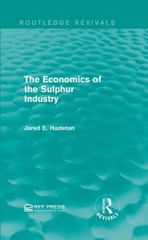Economical form to answer that.
China and the US are each 30% of the world economy, Canada is a small country. Looking at the rst two quarters of 2020 the periods where pandemic shutdown took place the (approximate) data for two-period growth was: Y1 Y2 China 30 -6% 6% US 30 2% -7% Canada 0 1% 5% ROW 40 0% -4% What effects will there be on world markets and each county's balance of payments? Make sure you have briey worked out the graphs for each country and the world market as a key intuitive check on your analysis. You will have to know the graphs for the midterm. Numerical Solution Method: Given you know the Y] changes in supply, determine the wealth e'ect for each country to determine Cd(W) and Cd(W*). Then, again using country weights on both supply and demand, work out the common change in r* (and Cd(r)) needed to restore world market supply/demand equilibrium. The change in Cd(r) will be fed to all countries. a. Summarize results in a rst table describing the percentage changes in each country and the world for all items except the last two. This will determine the CA change; the last two columns will be determined from the stage below. Y1 Y2 Cd(W) Cd(r) Cd(total) (YCd) (Bd-Bs) (H1 -Ho) China US Canada ROW WORLD b. Assuming that Hd(r) = Cd(r) and Hd(W) = .5Cd(W) and using the percentage changes previously determined for, make the following table. The change in P* should then be determined, from which you can get the change in H in each country. Substitute the (H1 HO) percentage determined into the first table above. This exercise is essentially what we did in the money market equations underneath our graphs: H = P x Hd (i, W). We are aSSuming the world money supply H* is xed. Hd(W) Hd(r) Hd (total) P* (HIHo) China US Canada ROW WORLD c. Aer calculating (H1 Ho) for each country, determine (Bd-Bs), such that the changes in total asset ows sum to the change in the current account. d. Summarize briey in words what is going on in this world scenario, especially focusing on the saving/borrowing incentives for nations and its general recessionary implications. e. Are there any (Bd-Bs) signs that look problematic, when checked with your graphs? f. Does this analysis afrm the basic accounting identity: CA + FA = 0







